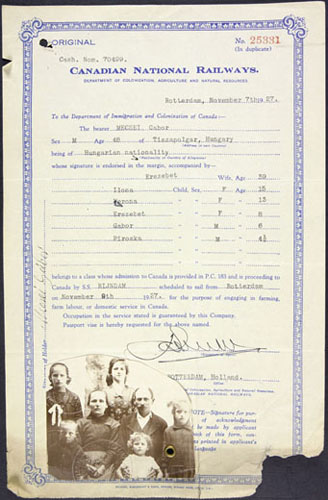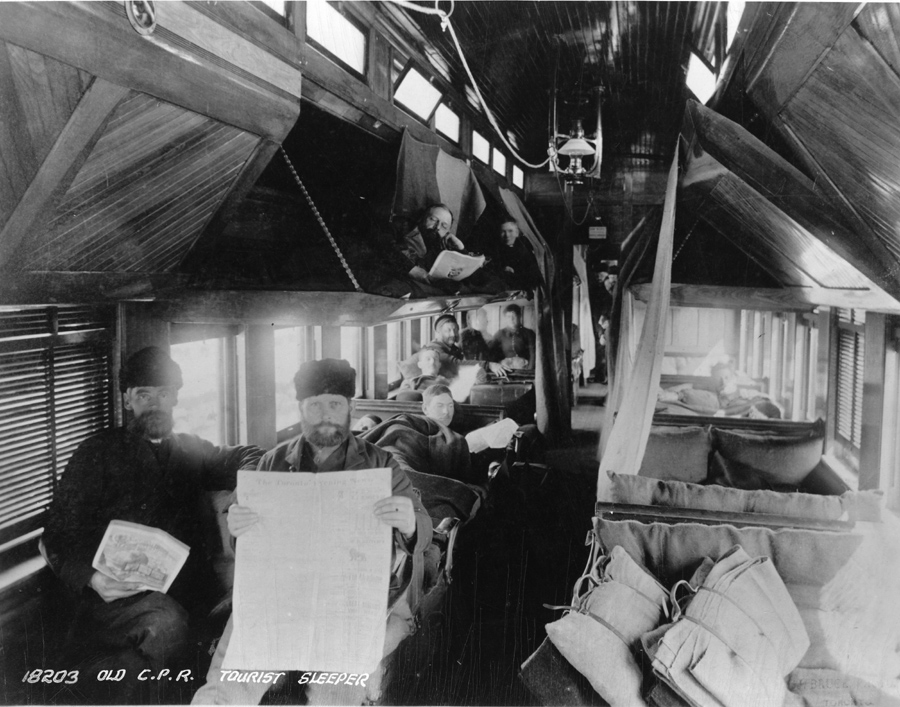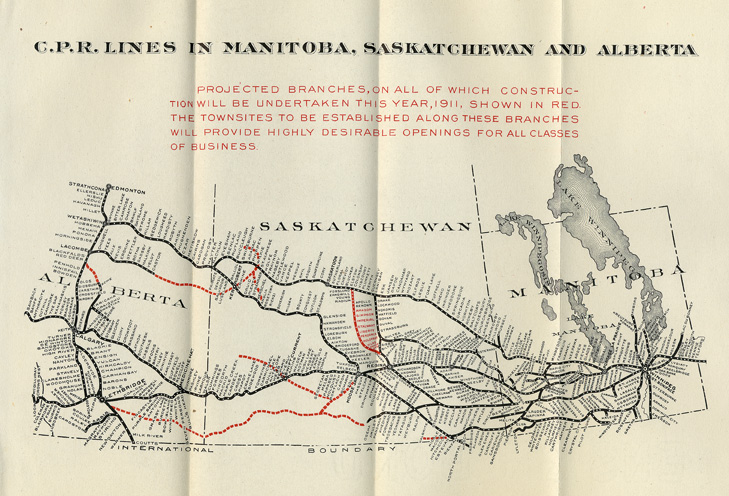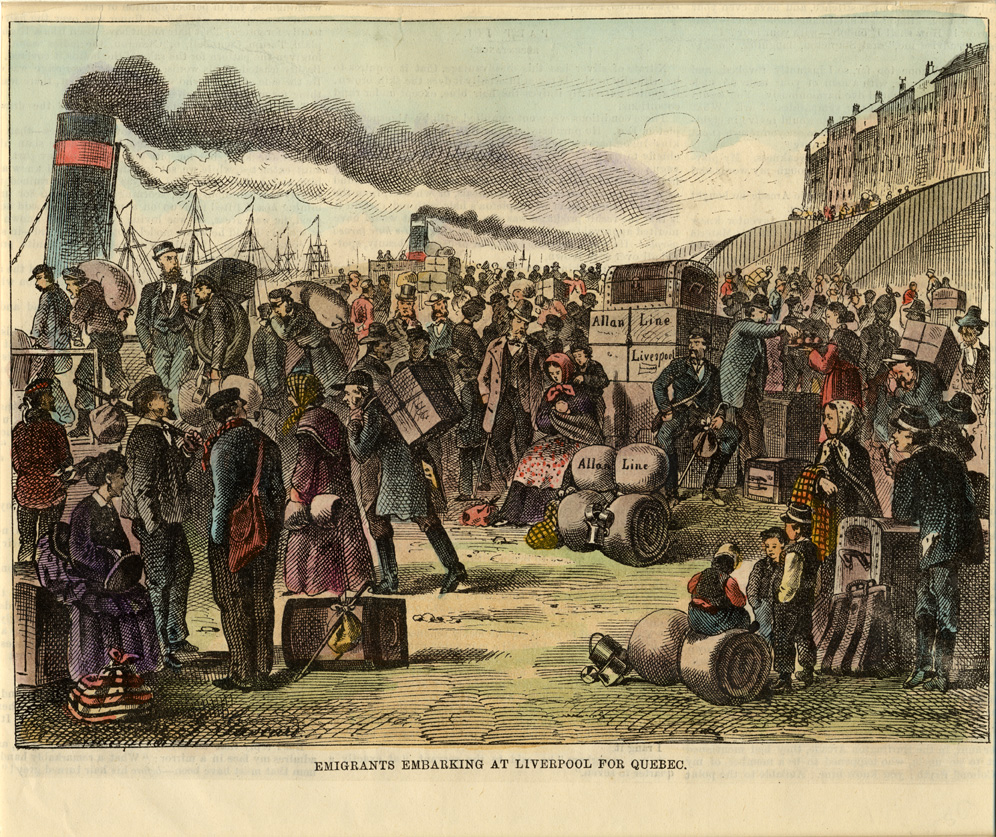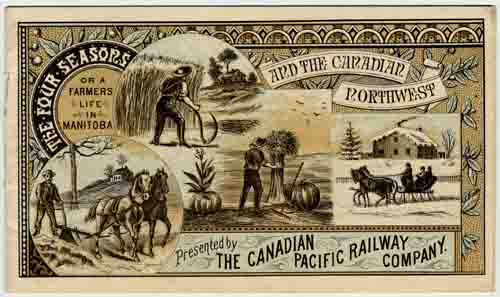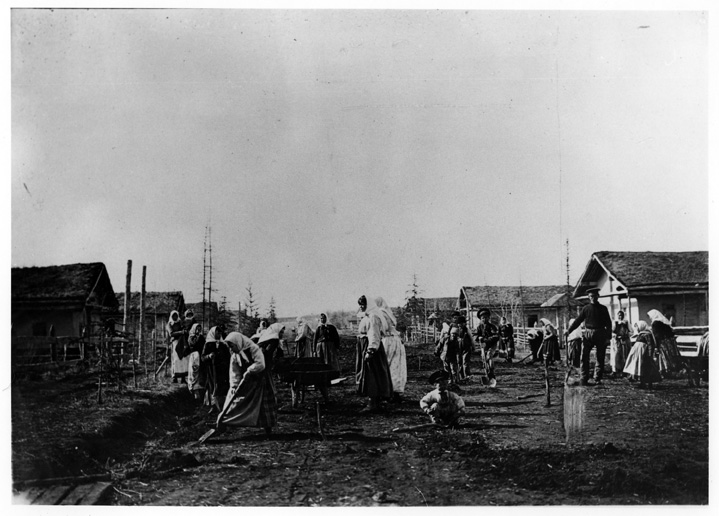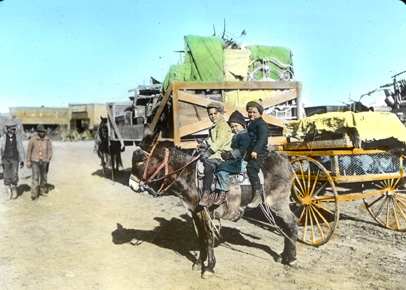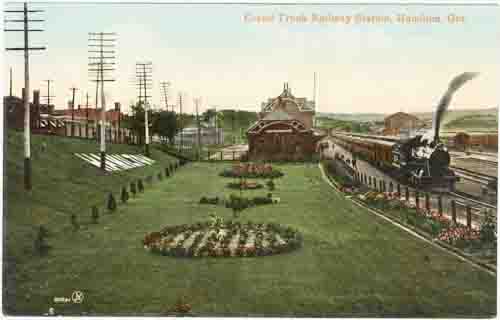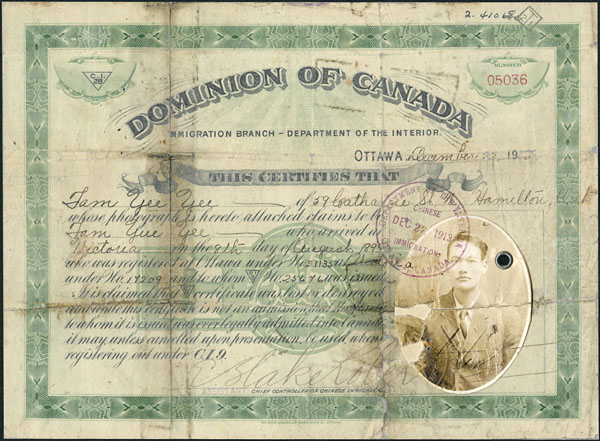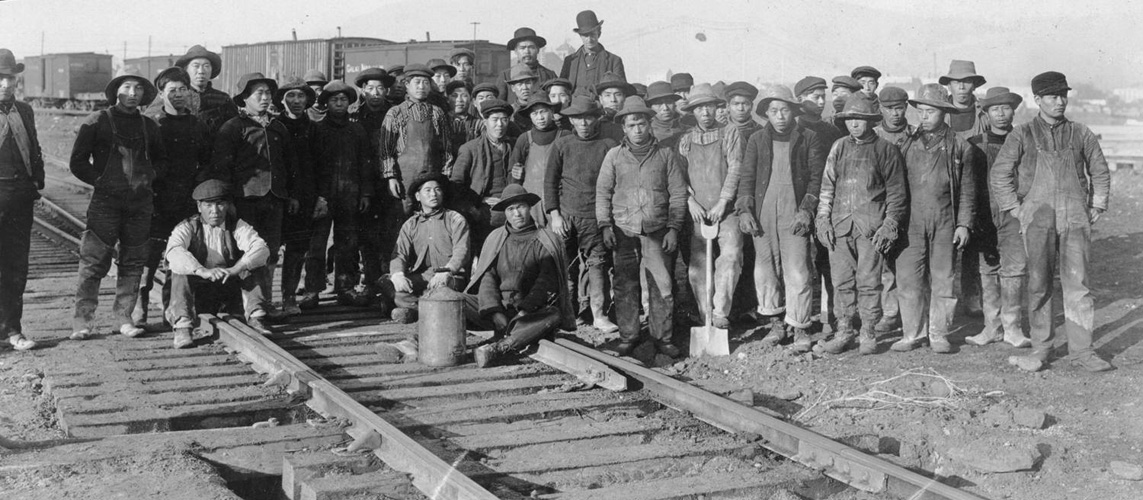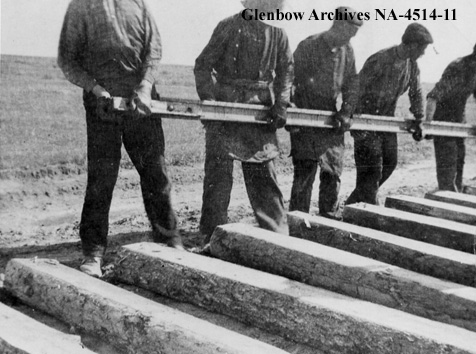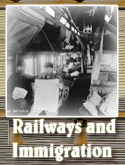Railways and Immigration to Canada
Construction of the railway across the provinces of Canada and the ensuing industrial development required the contribution of a great many workers. Rural development and the many cities springing up beside the railway lines also depended on new settlers.
The Canadian government, in collaboration with the railway companies, launched advertising campaigns in the immigration and tourism offices of many countries to attract potential immigrants to come and live in Canada.
The positive effects of the construction of the railway in Canada include:
- Immigration on a large scale, which contributed to the growth of towns and cities, as well as the Canadian economy.
- Increase in passenger travel by train.
- Much greater capacity for transporting goods, which allowed for greater trade.
- Remote regions could now be colonized and their natural resources exploited.
- Railways created jobs in Canadian communities.
- Once established, the railway network continued to expand.
Luring immigrants
The Canadian government published promotional posters and information brochures that were translated into several languages. Exhibitions were set up and lectures given to encourage Europeans, Americans and Canadians from other provinces to settle in Western Canada: “Good farming land for sale!”
This program to lure colonists was highly successful: between the late 1890s and 1914, more than 3 million immigrants settled in Canada.
Every possible means was used to attract immigrants: railway station gardens were beautifully arranged to greet the new arrivals and create an impression of fertile lands. The gardens were maintained by the railway companies, and station employees and their families were strongly encouraged to care for them. Professional gardeners were hired to look after larger grounds.
Chinese workers
It took thousands of workers to build the trans-Canada railway. When the main line was completed in British Columbia, there were still 500 kilometres of track to lay between Port Moody and Eagle Pass. Building a railway through the Rocky Mountains was a dangerous business; to this end, the Canadian Pacific Railway hired more than 15,000 Chinese workers, who were paid $1 a day—half the wages of Canadians working alongside them.
Between 1881 and 1885, it is estimated that 4,000 Chinese workers died on the job or from disease. The work was difficult and perilous: many men were injured or killed when tunnels accidentally collapsed during dynamiting. The Chinese workers were nicknamed “exploding men.” Fearing for their jobs, residents of British Columbia were angered by the arrival of new immigrants, but in reality, Canadians were not willing to take on these treacherous jobs. Chinese workers were victims of discrimination: in addition to receiving lower wages for equivalent work, they did not enjoy the same benefits as Canadian workers. Moreover, they were poorly fed and undernourished.
In addition to Chinese immigrants, European workers were also recruited.
- A large labour force was needed to build the railway and its immense support structures (bridges and tunnels). Scottish and Irish workers helped build the Victoria Bridge connecting the South Shore of the St. Lawrence River with Montréal.
- There was an urgent need for farm workers to cultivate the fertile lands of the Prairies. Trains were used to transport grain and its cultivation would therefore ensure the future of the railway. Between 1890 and 1914, about 170,000 Ukrainian farmers came to Canada and settled in the Prairies.
Italian immigrants also contributed to the Canadian economy and proved to be excellent entrepreneurs. They launched numerous businesses ranging from restaurants and grocery stores to clothing shops and barbershops.








